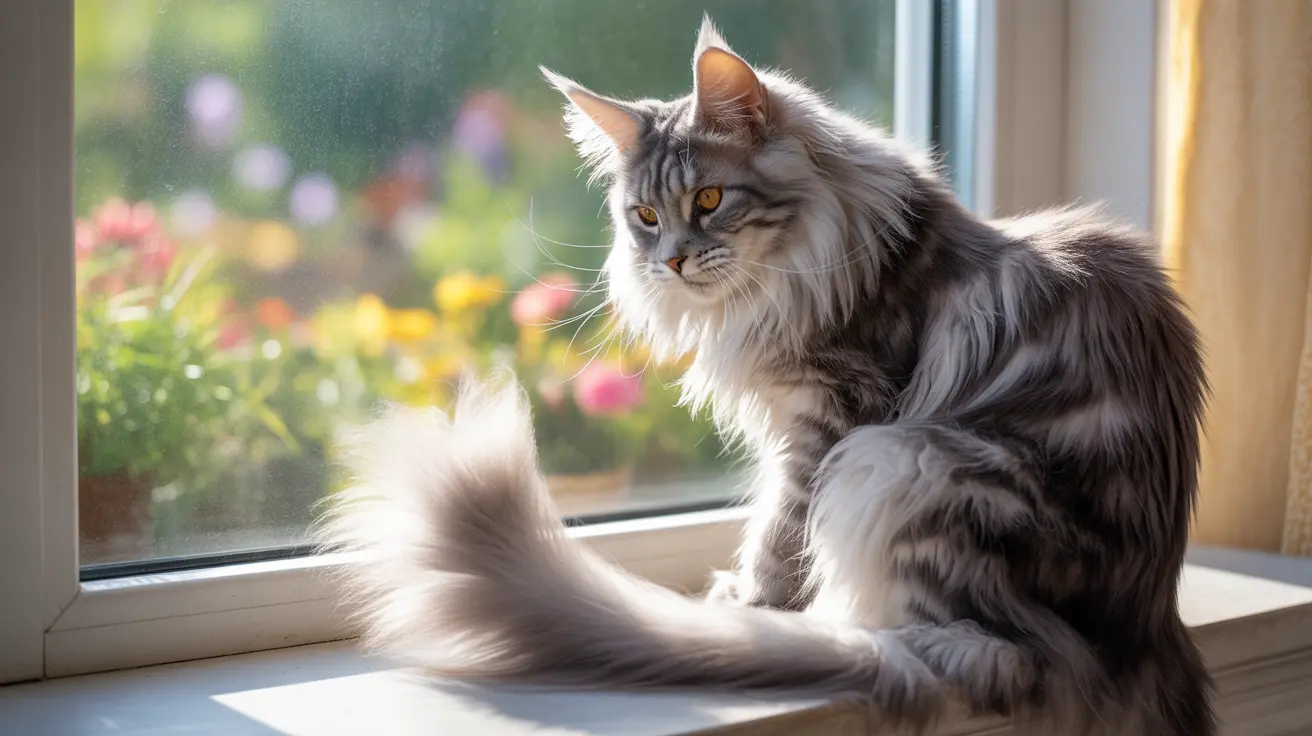Discovering bald patches or thinning fur on your cat's tail can be worrying for any pet owner. This common feline health issue can stem from various causes, ranging from simple parasitic infections to more complex medical conditions. Understanding the root cause is crucial for effective treatment and your cat's overall well-being.
In this comprehensive guide, we'll explore the various reasons behind feline tail hair loss, help you identify warning signs, and provide expert-backed solutions to address this concerning condition.
Common Causes of Tail Hair Loss in Cats
Parasitic Infections
Fleas are the most frequent culprits behind tail hair loss, particularly affecting the base of the tail and lower back. When cats have flea allergy dermatitis (FAD), even a single flea bite can trigger intense itching and subsequent hair loss. Regular flea prevention is essential, even for indoor cats, as fleas can hitchhike on humans or other pets.
Other parasites like mites and lice can also cause hair loss and skin irritation. These conditions often require veterinary diagnosis and specific anti-parasitic treatments.
Allergic Reactions
Beyond flea allergies, cats can develop sensitivities to food, environmental allergens, or grooming products. These allergies often manifest as skin irritation and hair loss, particularly in areas the cat can easily reach, like the tail. Common signs include excessive grooming, redness, and scabbing.
Medical Conditions
Several health issues can cause tail hair loss:
- Stud tail (supracaudal gland hyperplasia)
- Ringworm infections
- Hormonal imbalances
- Thyroid disorders
- Bacterial skin infections
Behavioral Issues
Stress and anxiety can lead to psychogenic alopecia, where cats compulsively over-groom specific areas, including the tail. This behavior often occurs following significant changes in the cat's environment or routine. Creating a calm, enriching environment can help reduce stress-related grooming.
Signs That Require Immediate Veterinary Attention
While some causes of tail hair loss might resolve with simple treatments, certain symptoms warrant prompt veterinary care:
- Open sores or bleeding
- Severe itching or discomfort
- Changes in behavior or appetite
- Spreading hair loss
- Signs of infection (redness, swelling, discharge)
Treatment Options and Prevention
Treatment approaches vary based on the underlying cause:
- Parasitic infections: Anti-parasitic medications and environmental treatment
- Allergies: Allergen identification and avoidance, antihistamines, or steroids
- Skin infections: Topical or oral antibiotics
- Behavioral issues: Environmental enrichment and anxiety management
- Medical conditions: Specific treatments based on diagnosis
Long-term Management Strategies
Preventing recurring tail hair loss involves:
- Regular flea prevention
- Routine grooming and skin checks
- Stress reduction techniques
- Maintaining a balanced diet
- Regular veterinary check-ups
Frequently Asked Questions
What are the most common causes of a cat losing hair specifically on its tail?
The most common causes include flea infestations, allergies, stress-related over-grooming, and medical conditions like stud tail or ringworm. Flea allergy dermatitis is particularly common, especially affecting the tail base.
How can I tell if my cat's tail hair loss is due to fleas, allergies, or stress?
Look for specific signs: flea dirt (black specks) indicates fleas; redness and inflammation suggest allergies; and behavioral changes with no skin irritation often point to stress-related causes. A veterinary examination can provide definitive diagnosis.
When should I take my cat to the vet for hair loss on its tail?
Seek veterinary care if you notice severe itching, open sores, spreading hair loss, behavioral changes, or if the condition doesn't improve with basic care. Immediate attention is needed for signs of infection or significant discomfort.
What treatments are available for stud tail and other skin conditions causing tail hair loss in cats?
Treatments vary by condition but may include medicated shampoos, topical medications, oral antibiotics, or hormonal treatments. Stud tail specifically often responds well to specialized cleaning and medication.
How can I prevent my cat from losing hair on its tail due to parasites or behavioral issues?
Maintain regular flea prevention, keep your cat's environment clean, reduce stress factors, and provide environmental enrichment. Regular grooming and monitoring can help catch issues early.
Remember, while tail hair loss is common in cats, proper diagnosis and treatment are essential for your pet's health and comfort. When in doubt, always consult with your veterinarian for personalized advice and treatment options.






